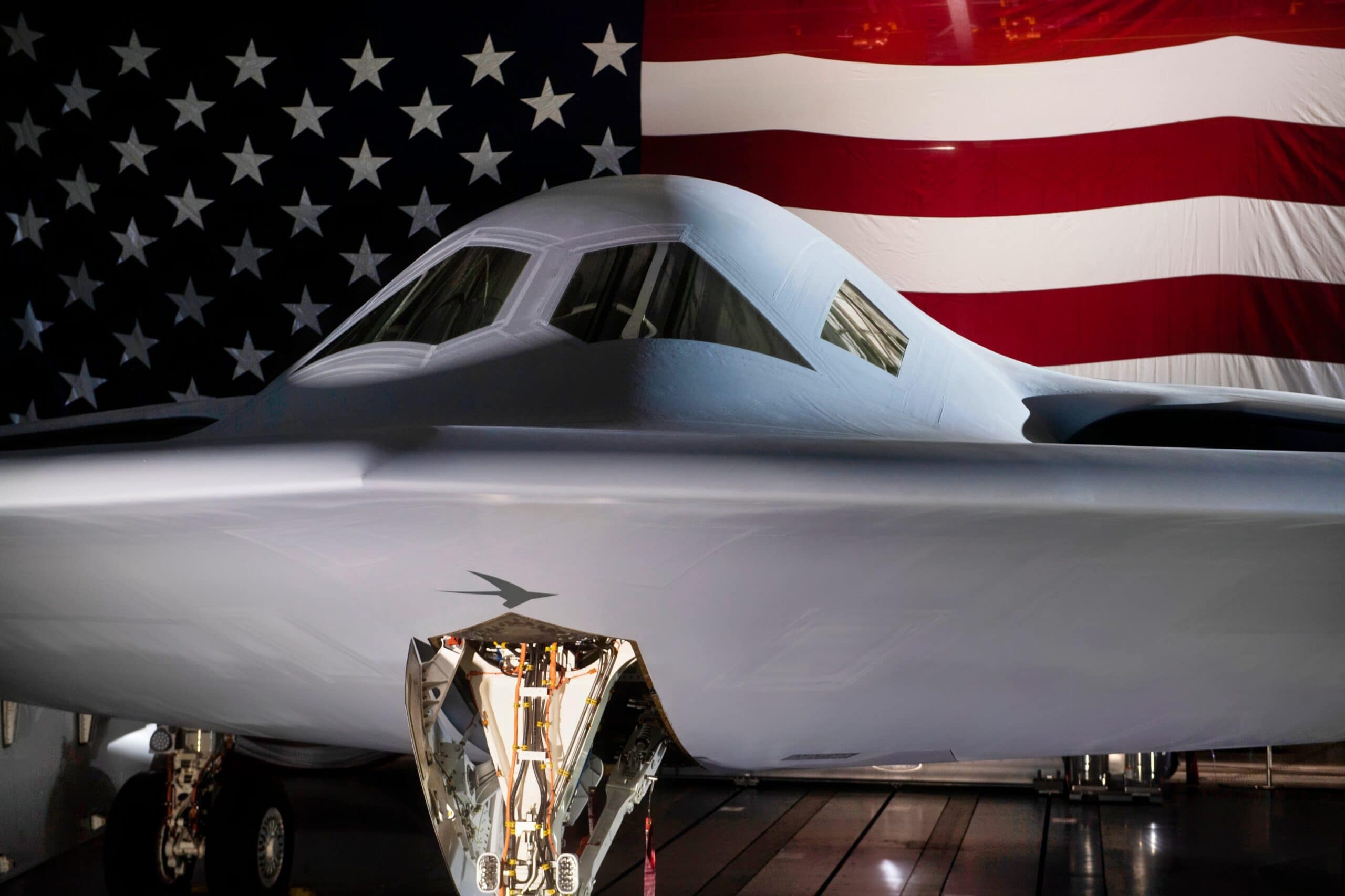New Photos Give Sneak Peek Of B-21 Raider’s Exhaust Design: A newly published photograph of the second B-21 Raider, snapped shortly after takeoff, has given the world the most detailed look yet at a crucial part of any stealth aircraft: its engine exhaust system. The new photograph offers a rare window into how America’s next-generation stealth bomber handles head and its infrared (IR) signature – an often overlooked, but critical, aspect of its survivability.
Newest peek at the B-21 Raider.https://t.co/klY46XdHxd
— George Knapp (@g_knapp) September 19, 2025
The imagery is significant because, until now, official photographs of the B-21 have all avoided showing its rear section. A previous ground-test photograph from October 2023 was taken from afar and was affected by heat distortion, making it difficult to see some of its most important features. The newest photograph, by contrast, is extremely clear. The exhaust nozzle shape can be seen clearly, along with its trailing edges.
Many observers had initially speculated that the B-21 would diverge from the B-2’s exhaust architecture – but the new image actually confirms they are very similar in design. The exhaust appears flat and embedded, mixing hot and cooler flows to reduce IR signature. Notably, however, the B-21 lacks the “sawtooth’ trailing edge of its predecessor behind the nozzle, opting instead for a clean, straight line.
Why Exhaust Design Matters In Stealth
Exhaust design matters in stealth designs because hot air emitted from the rear of an aircraft is one of its largest sources of IR emissions. The same is true for guided missiles.
That infrared signature describes how detectable an object is in the infrared (heat) spectrum, based on its temperature, surface characteristics, and the surrounding environment. Stealth aircraft designers therefore go to great lengths to suppress or mask exhaust heat, alongside reducing radar signature. It is just as important as the low-observable coatings used all over the shell of the aircraft.
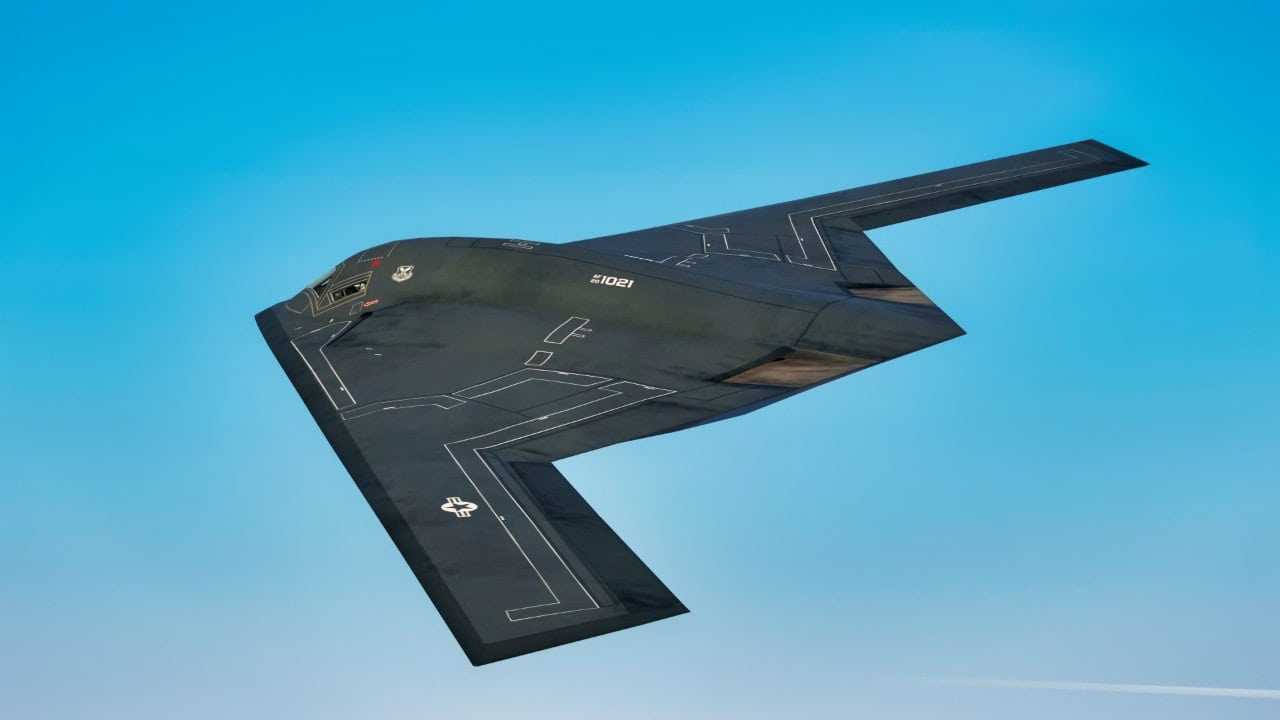
B-21 Raider Artist Rendering.
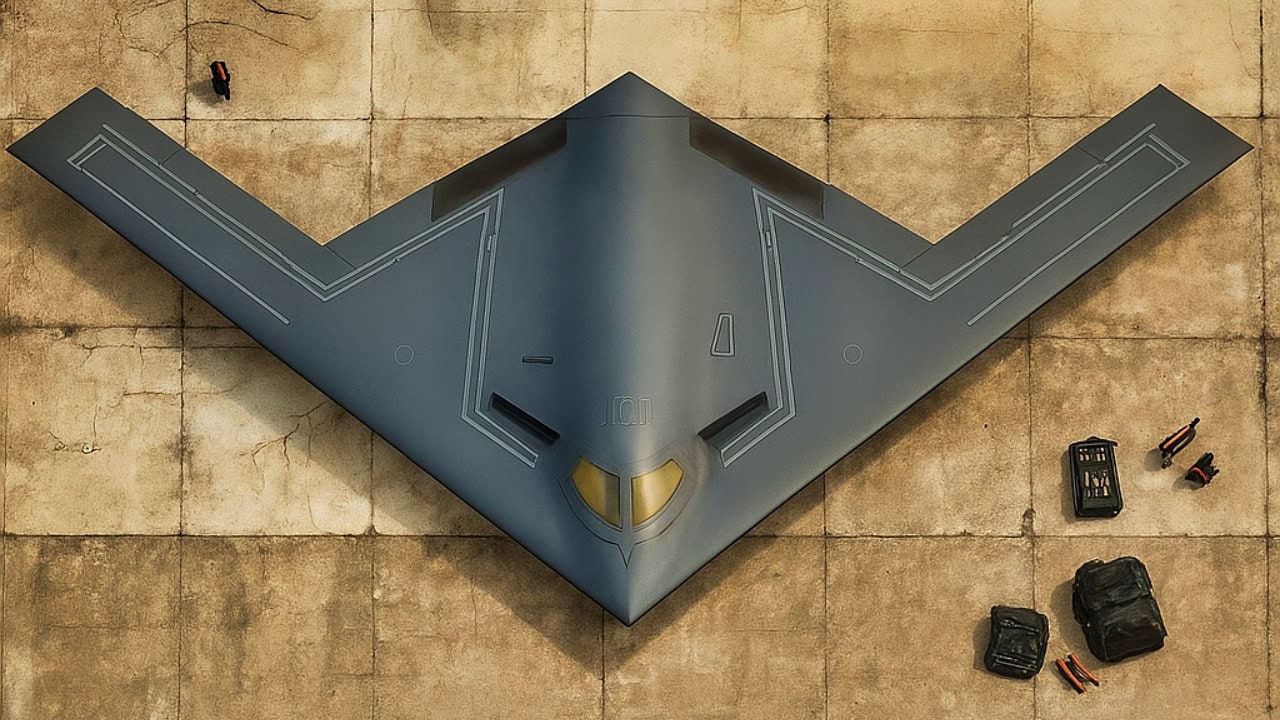
B-21 Raider Bomber. Image from U.S. Air Force and edited with AI software.
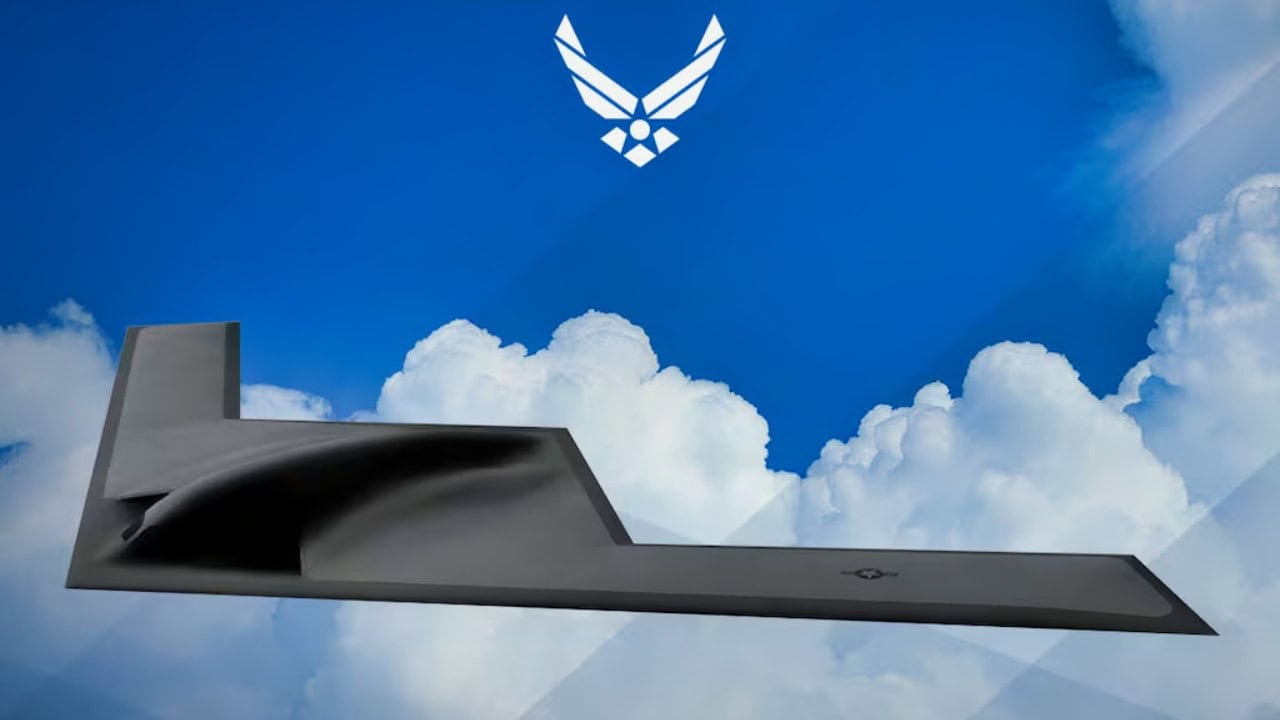
B-21 Raider Bomber.
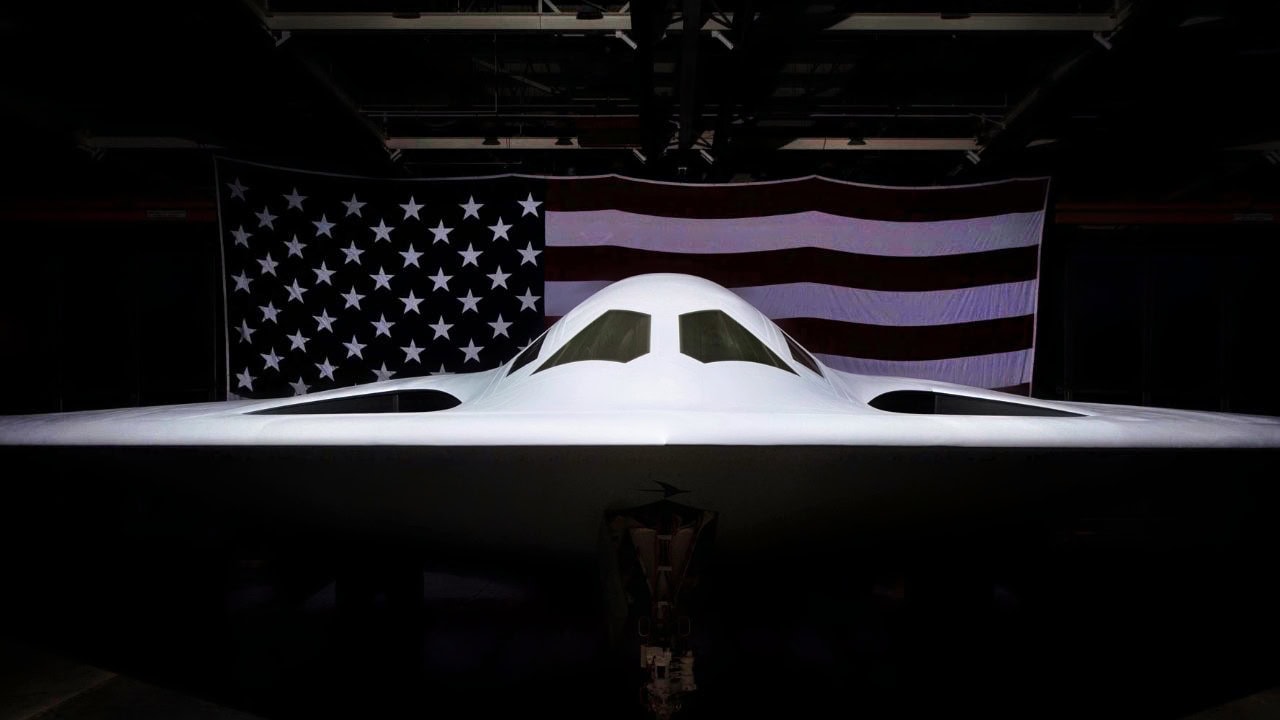
B-21 Raider Bomber. Image Credit: Creative Commons.
Broadly, the goals in stealthy exhaust design are to shield hot surfaces from direct view, to spread and mix hot gases with cool air to lower plume temperature, and to use materials or shapes to diffuse residual heat. Finally, designs must avoid the use of “spike-like” or “point-source” exhausts – meaning that the exhaust must not come out of the aircraft as a single, tight, and concentrated jet of very hot gas. Those narrow, focused plumes of heat appear as a bright dot on infrared sensors, much in the same way a candle flame looks brighter than a campfire from further away.
These objectives, however, fly in the face of all of the main performance goals a stealth aircraft design team works towards – a conundrum that makes stealth design so famously difficult to master. Every stealthy exhaust decision will always be a trade-off for this reason.
Lessons From Earlier Stealth Platforms
Engineers working on the B-21 have their own years of experience to build on, as well as earlier stealth platforms from which they can draw inspiration.
The predecessor to the B-21 Raider, the B-2 Spirit, is one of the hallmark examples of stealth engineering. Its engines are buried deep inside the airframe and send exhaust gases through long ducts to slot-like outlets along the trailing edges of the wing. The configuration hides the hottest parts of the engines from view, especially from below, where heat-seeking missiles and infrared sensors usually look for targets.
By spreading the exhaust over a wider area, the flow is more readily mixed with ambient air, meaning it is cooled before it is released from the aircraft. Special coatings and heat-resistant materials also help diffuse any remaining thermal emissions. And, because the B-2 does not use afterburners, its exhaust temperatures are easier to keep at lower temperatures. The design, however, comes with a cost: reduced raw performance.
The F-117 Nighthawk that came before the B-2 also offers some lessons. The aircraft adopted a flat, or slot-like exhaust design located above the fuselage. The exhaust system mixed hot gases with ambient air and shielded the plume from below. However, the earlier materials and thermal designs used on the aircraft limited how much IR suppression it could achieve – and it is no match for modern platforms.
The F-22 Raptor and F-35 Lightning II offer some lessons, too. These two later stealth aircraft make completely different compromises. The F-22, for example, uses rectangular, thrust-vectoring nozzles that help manage IR emissions by spreading exhaust and limiting direct exposure – while also retaining high maneuverability. The F-35, however, takes more conventional round nozzle approach – but it is still heavily optimized. Its exit flaps, for example, include chevrons that generate vortices to mix exhaust and ambient air. And, its internal surfaces include cooling air channels and low-emissivity materials to prevent heated surfaces from radiating heat.
What We Know From the Photos
The new images of the B-21’s exhaust suggests that the next-generation stealth bomber’s design heavily prioritizes IR suppression. The straight trailing edge that replaces the B-2’s sawtooth hints at new design optimizations that come from simple geometric changes.
Some observers have also noted that some mixing of ambient air could be happening before exhaust exit, in a similar vein to the B-2 setup.
What the picture does not show, however, is how extensive internal ducting, heat shielding, or active cooling could be implemented.
While the second B-21 Raider flew on September 11, 2025, and the program moves ahead at a steady pace, many questions about its design remain.
About the Author:
Jack Buckby is a British author, counter-extremism researcher, and journalist based in New York who writes frequently for National Security Journal. Reporting on the U.K., Europe, and the U.S., he works to analyze and understand left-wing and right-wing radicalization, and reports on Western governments’ approaches to the pressing issues of today. His books and research papers explore these themes and propose pragmatic solutions to our increasingly polarized society. His latest book is The Truth Teller: RFK Jr. and the Case for a Post-Partisan Presidency.

